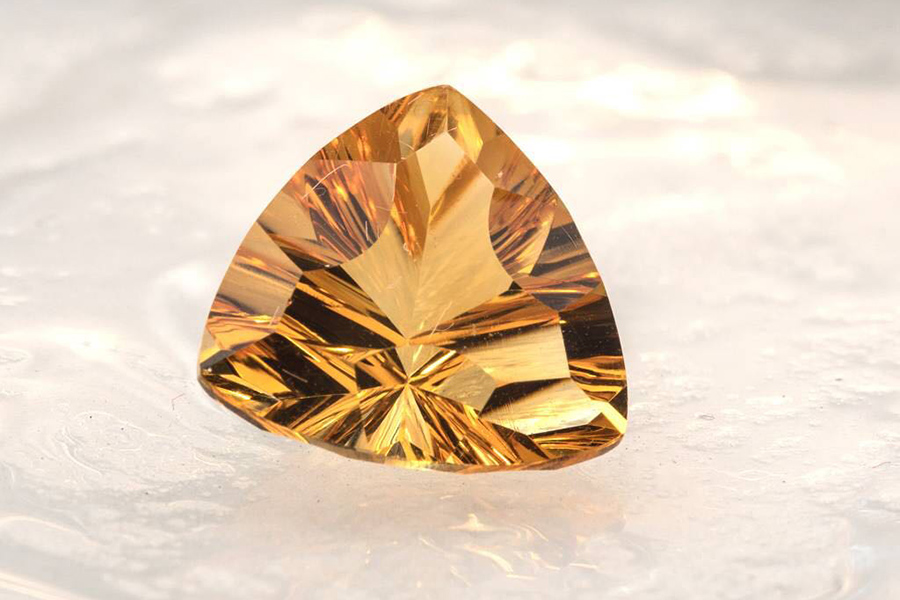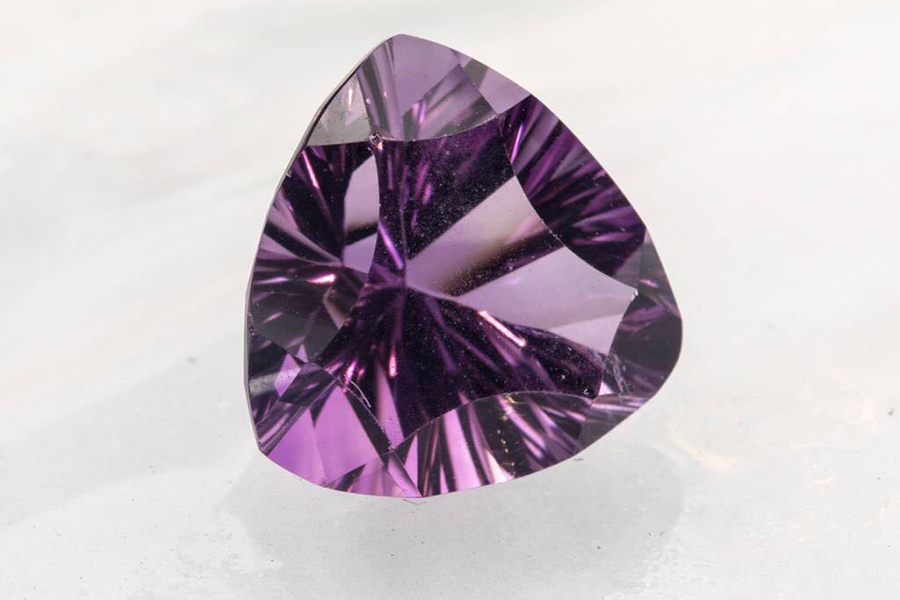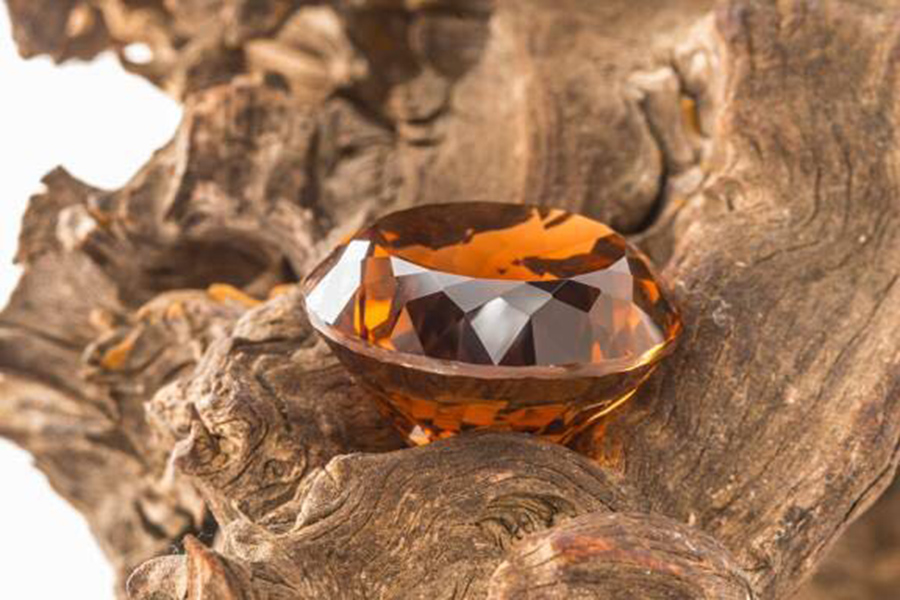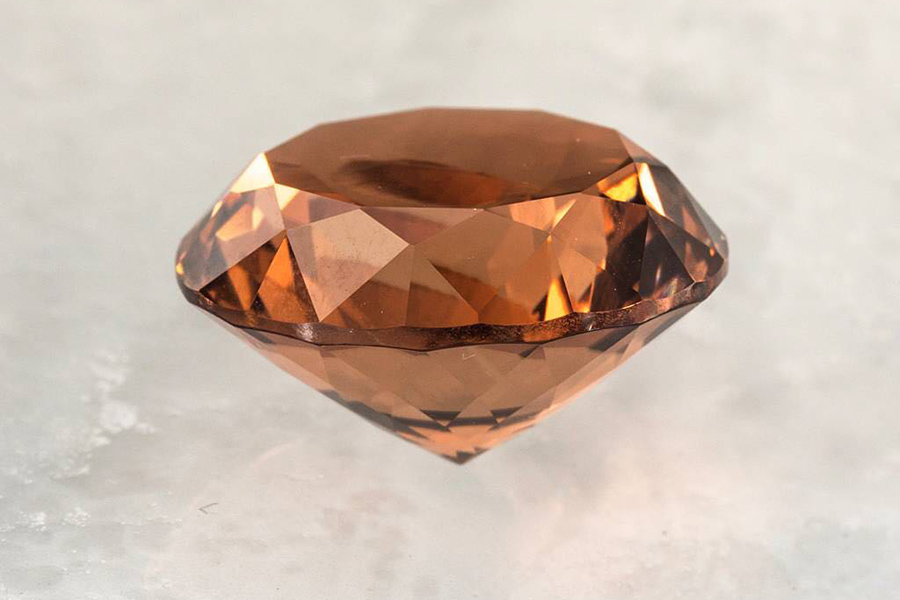Tourmaline
Tourmaline is a crystal silicate mineral compounded with elements such as aluminium, iron, magnesium, sodium, lithium, or potassium.
Tourmaline is a crystal silicate mineral compounded with elements such as aluminium, iron, magnesium, sodium, lithium, or potassium. Tourmaline is classified as a semi-precious stone and the gem comes in a wide variety of colors. The name comes from the Sinhalese word "Thuramali" or "Thoramalli", which applied to different gemstones found in Sri Lanka
History
Brightly colored Sri Lankan gem tourmalines were brought to Europe in great quantities by the Dutch East India Company to satisfy a demand for curiosities and gems. At the time it was not realised that schorl and tourmaline were the same mineral.
Schorl
The most common species of tourmaline is schorl. It may account for 95% or more of all tourmaline in nature.
The early history of the mineral schorl shows that the name "schorl" was in use prior to 1400 because a village known today as Zschorlau (in Saxony, Germany) was then named "Schorl" (or minor variants of this name).
This village had a nearby tin mine where, in addition to cassiterite, black tourmaline was found. The first description of schorl with the name "schürl" and its occurrence (various tin mines in the Saxony Ore Mountains) was written by Johannes Mathesius (1504–1565) in 1562 under the title "Sarepta oder Bergpostill".
Up to about 1600, additional names used in the German language were "Schurel", "Schörle", and "Schurl". Beginning in the 18th century, the name Schörl was mainly used in the German-speaking area. In English, the names shorl and shirl were used in the 18th century. In the 19th century the names common schorl, schörl, schorl and iron tourmaline were used in the Anglo-Saxon area.
The word tourmaline has two etymologies, both from the Sinhalese word turamali, meaning "stone attracting as (a reference to its pyroelectric properties) or according to other sources "mixed gemstones".
Dravite
The name dravite was used for the first time by Gustav Tschermak (1836–1927), Professor of Mineralogy and Petrography at the University of Vienna, in his book Lehrbuch der Mineralogie (published in 1884) for magnesium-rich (and sodium-rich) tourmaline from the village Unterdrauburg, Drava river area, Carinthia, Austro-Hungarian Empire.
Today this tourmaline locality (type locality for dravite) at the village Dravograd (near Dobrova pri Dravogradu), is a part of the Republic of Slovenia. Tschermak gave this tourmaline the name dravite, for the Drava river area, which is the district along the Drava River (in German: Drau, in Latin: Drave) in Austria and Slovenia. The chemical composition which was given by Tschermak in 1884 for this dravite approximately corresponds to the formula NaMg3(Al,Mg)6B3Si6O27(OH), which is in good agreement (except for the OH content) with the endmember formula of dravite as known today.
Elbaite
A lithium-tourmaline (elbaite) was one of three pegmatitic minerals from Utö, Sweden, in which the new alkali element lithium (Li) was determined in 1818 by Arfwedson for the first time. Elba Island, Italy, was one of the first localities where colored and colorless Li-tourmalines were extensively chemically analysed. In 1850 Rammelsberg described fluorine (F) in tourmaline for the first time. In 1870 he proved that all varieties of tourmaline contain chemically bound water. In 1889 Scharitzer proposed the substitution of (OH) by F in red Li-tourmaline from Sušice, Czech Republic. In 1914 Vernadsky proposed the name Elbait for lithium-, sodium-, and aluminum-rich tourmaline from Elba Island, Italy, with the simplified formula (Li,Na)HAl6B2Si4O21. Most likely the type material for elbaite was found at Fonte del Prete, San Piero in Campo, Campo nell'Elba, Elba Island, Livorno Province, Tuscany, Italy.
In 1933 Winchell published an updated formula for elbaite, H8Na2Li3Al3B6Al12Si12O62, which is commonly used to date written as Na(Li1.5Al1.5)Al6(BO3)3[Si6O18](OH)3(OH). The first crystal structure determination of a Li-rich tourmaline was published in 1972 by Donnay and Barton, performed on a pink elbaite from San Diego County, California, USA.
Physical properties
Crystal structure
Tourmaline belongs to the trigonal crystal system and occurs as long, slender to thick prismatic and columnar crystals that are usually triangular in cross-section. The style of termination at the ends of crystals is asymmetrical, called hemimorphism. Small slender prismatic crystals are common in a fine-grained granite called aplite, often forming radial daisy-like patterns. Tourmaline is distinguished by its three-sided prisms; no other common mineral has three sides. Prisms faces often have heavy vertical striations that produce a rounded triangular effect. Tourmaline is rarely perfectly euhedral. An exception was the fine dravite tourmalines of Yinnietharra, in western Australia. The deposit was discovered in the 1970s, but is now exhausted. All hemimorphic crystals are piezoelectric, and are often pyroelectric as well.
Color
Tourmaline has a variety of colors. Usually, iron-rich tourmalines are black to bluish-black to deep brown, while magnesium-rich varieties are brown to yellow, and lithium-rich tourmalines are almost any color: blue, green, red, yellow, pink etc. Rarely, it is colorless. Bi-colored and multicolored crystals are common, reflecting variations of fluid chemistry during crystallisation. Crystals may be green at one end and pink at the other, or green on the outside and pink inside: this type is called watermelon tourmaline. Some forms of tourmaline are dichroic, in that they change color when viewed from different directions.
Treatments
Some tourmaline gems, especially pink to red colored stones, are altered by irradiation to improve their color. Irradiation is almost impossible to detect in tourmalines, and does not impact the value. Heavily-included tourmalines, such as rubellite and Brazilian paraiba, are sometimes clarity enhanced. A clarity-enhanced tourmaline (especially paraiba) is worth much less than a non-treated gem.






